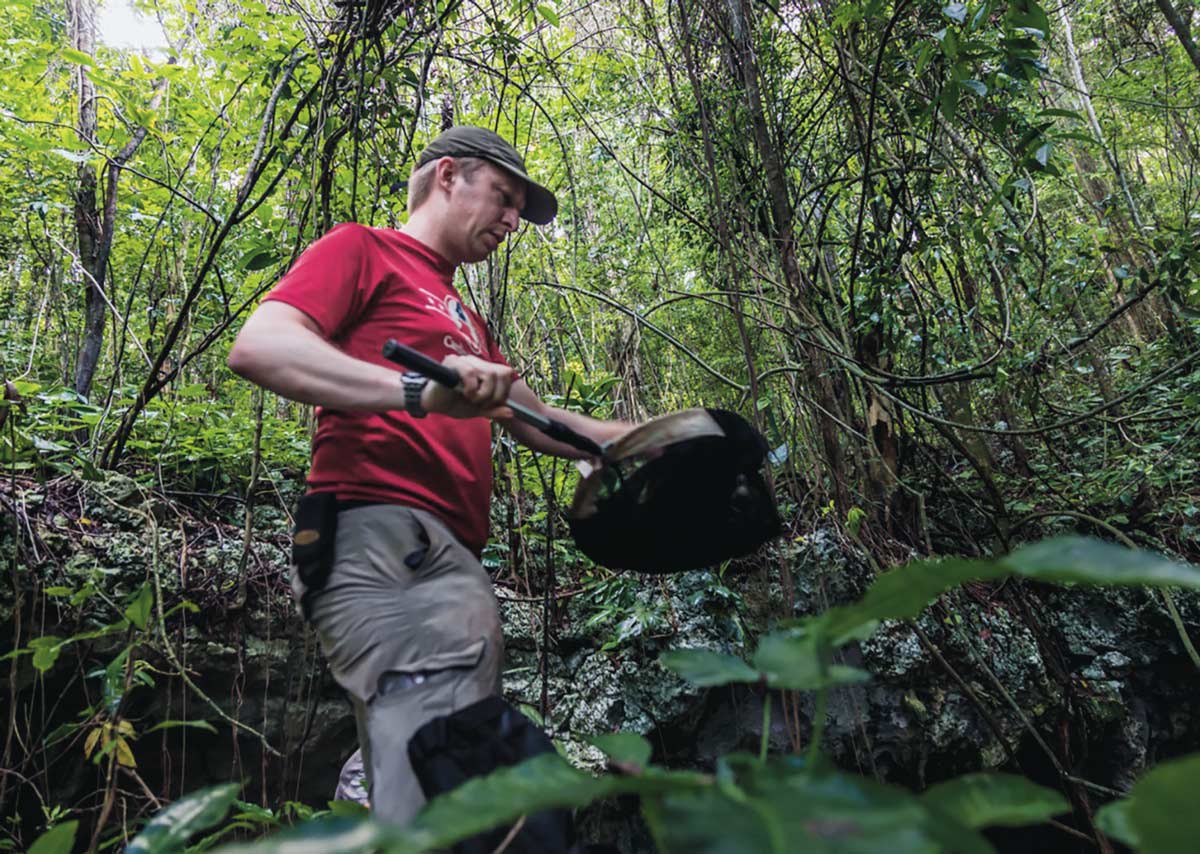Preserving a Cave to Save the Jamaican Flower Bat

Right Photo: Sherri and Brock Fenton
n a Jamaican hill overlooking the ocean, new development is transforming the landscape. Gorgeous views and a COVID-era desire to get out of big cities like Kingston led to people snapping up countryside land and building homes. This area, in northeast Jamaica near the town of Port Antonio, is a very sought-after area for home building.
However, it is also the site of Stony Hill Cave, the only known maternity roost for the Critically Endangered Jamaican flower bat (Phyllonycteris aphylla).


However, though the faint whiff of guano (bat excrement) is detectable from time to time, the cave is not obvious to the casual observer. “You could drive along the road and, unless you know it’s there, you would drive right past it,” says Dr. Jon Flanders, BCI’s Director of Endangered Species Interventions.
“From a conservation point of view, building anything on the land parcel we have purchased—even if it doesn’t damage the cave—would be catastrophic to the bats using it and probably signal the demise and the extinction of the Jamaican flower bats,” adds Dr. Flanders.
—Dr. Jon Flanders

Jamaican flower bats like it hot

Protecting Bats From Cats
Bat Conservation International (BCI) is working with NEPA, the Jamaican Cave Organisation, Pacific Rim Conservation, and other partners to help conserve this very fragile cave. The cave is remote and not currently under development pressure, but scientists are concerned about the impact of feral cats hunting and eating the bats that live there.
This fall, BCI scientists will return to the cave to work with NEPA and the local community to start building a predator-proof fence to keep the bats safe from cats. The partners will also continue their other collaborative efforts, including using camera systems for remote monitoring.



Complicating detection efforts, the species is especially hard to find because it is difficult to detect with standard acoustic monitoring gear.
Since much of the cave’s heat comes from decomposing bat excrement, scientists are looking to guano harvesters—people who collect guano for agricultural fertilizer—to help preserve the cave’s characteristics.
Avoiding cave disturbances
Removing guano also alters the fragile microhabitat. If there isn’t enough decomposing guano in the cave to maintain the high temperature and humidity the bats need, the cave will no longer provide suitable habitat for them.
When people enter the cave to collect guano, they also bother the bats. “If the bats are breeding and they have pups, and the pups are disturbed, they’re likely to fall,” Calder says. Once they fall to the cave floor, the pups—which are not yet able to fly—cannot get up and are devoured by cockroaches and other cave-dwelling insects.

—Dr. Jon Flanders
However, before any fence is built, the partners want to involve the community, and get neighbors engaged with cave protection efforts. As one part of this effort, Moore, who has a home right by the cave, took a look at the images of people harvesting guano, and when he realized he knew some of them, he talked to them and asked them to stop going into the cave.

“We have to get the community to be the eyes and ears in terms of preventing people from going in there,” Calder says.
They are looking at a variety of options, including signage or perhaps raising the wall separating the cave from the road, as long as they can do so without impeding the bats’ flight path. They are also exploring the idea of providing bat boxes or bat condominiums to provide a way for guano collectors to retrieve guano for fertilizer without entering the cave, though no final decisions have been made yet.
While there is more work to do, safeguarding the mouth of the cave is a crucial step to protect the Jamaican flower bat.
“Protecting Stony Hill cave is a significant step forward in the long-term protection of this Critically Endangered bat,” Dr. Flanders says. “I’m very proud of this success with all our partners.”